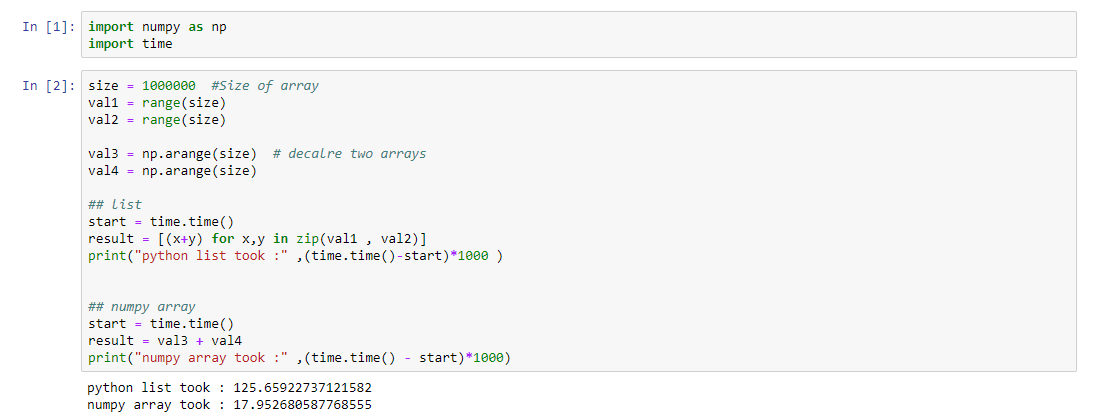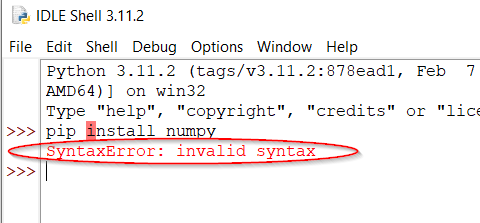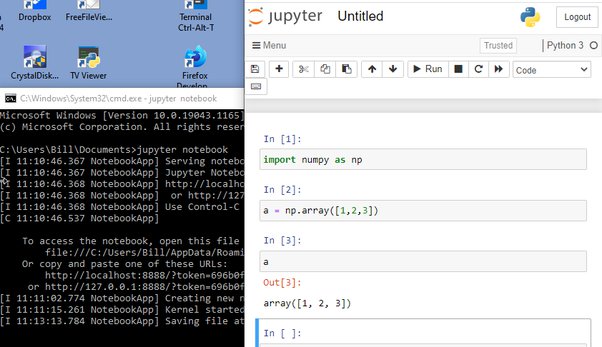How to import numpy in Python IDLE
How to import numpy in Python IDLE

I'd be happy to help you with that!
To import NumPy (or any other library) in Python's IDLE, follow these steps:
Launch IDLE: First, open IDLE by searching for it in your Start menu (Windows) or Spotlight search bar (Mac). On some systems, you might need to use the commandidle in a terminal or command prompt. Create a new window or open an existing one: Once IDLE is launched, you'll see a new window with a Python shell and some basic help messages. If this is your first time using IDLE, you can create a new window by clicking "File" > "New Window" (or press Ctrl + N). Write the import statement: In the Python shell, type the following line exactly as it appears: import numpy. You can use the auto-completion feature by pressing Tab to help you write the command.

numpy.__version__ (or any other NumPy function) and pressing Enter again. If everything goes smoothly, you should see the version number of NumPy printed in the shell. This confirms that you've successfully imported NumPy into your Python IDLE environment.

Here's a brief summary to recap:
Launch IDLE Create a new window or open an existing one Writeimport numpy and press Enter Verify the import by typing numpy.__version__ and pressing Enter
If you encounter any issues during this process, ensure that you have NumPy installed on your system. You can do this using pip (the Python package manager) by running pip install numpy. If you're still having trouble, feel free to ask, and I'll be happy to help!
How to import numpy in Python Jupyter Notebook

Here are the steps to import NumPy in a Python Jupyter Notebook:
Step 1: Open Your Jupyter Notebook

To start, open your Jupyter Notebook by navigating to the directory where you want to create the notebook and running jupyter notebook in your terminal or command prompt. This will launch a web-based interface that allows you to create new notebooks.
Step 2: Create a New Cell
Once your Jupyter Notebook is open, create a new cell by clicking on the "New" button at the top of the page or pressing Ctrl+Enter (or Cmd+Enter on Mac). This will open up an empty code cell where you can start typing.
Step 3: Import NumPy
To import NumPy into your Jupyter Notebook, simply type the following line of code and press Shift+Enter to execute:
import numpy as np
This line of code tells Python that you want to use the numpy library, which is a powerful tool for numerical computing in Python. The as np part assigns the alias np to the NumPy module, making it easier to refer to it later in your code.
Step 4: Verify Your Import
To make sure that you have successfully imported NumPy, you can try running some basic NumPy commands, such as:
print(np.__version__)
This will print out the version number of the NumPy library, which should match the version that you installed on your system.
Step 5: Use NumPy in Your Code
Now that you have imported NumPy, you can start using it in your code. For example, you could create an array:
my_array = np.array([1, 2, 3, 4, 5])
print(my_array)
Or perform some basic numerical operations:
x = np.random.rand(1)[0]
y = np.random.rand(1)[0]
print("The value of x is:", x)
print("The value of y is:", y)
And so on. NumPy provides a wide range of functions and tools for performing various types of numerical computations, including linear algebra, random number generation, Fourier transforms, and more.
Conclusion
In this tutorial, we covered the steps for importing NumPy into your Jupyter Notebook. This allows you to start using NumPy's powerful features for numerical computing in Python. By following these steps, you can take advantage of NumPy's many capabilities to analyze and visualize data, perform statistical analysis, and more.
Tips and Tricks
Always useimport numpy as np instead of from numpy import *, as the latter imports all of NumPy's functions, which can lead to name conflicts. Use np. instead of numpy. when referring to NumPy modules or functions. To avoid confusion with other Python libraries that provide similar functionality, it is a good idea to use np consistently throughout your code.
By following these guidelines and using the techniques outlined in this tutorial, you can effectively import and utilize NumPy in your Jupyter Notebook.





























